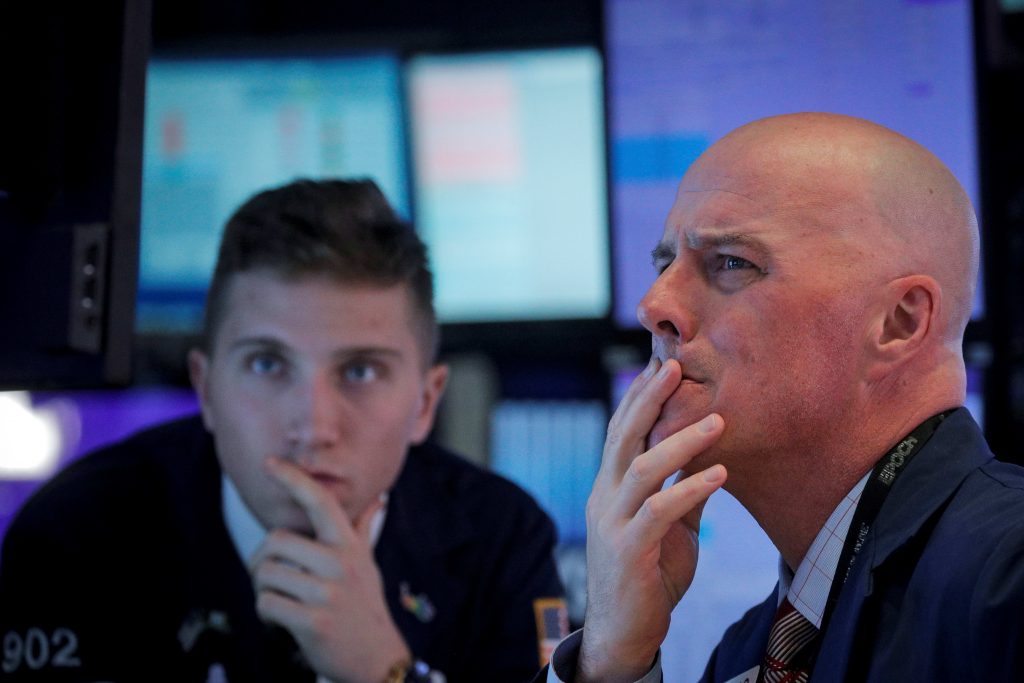
An employee rides a bicycle next to oil tanks at Saudi Aramco oil facility in Abqaiq, Saudi Arabia October 12, 2019.
Maxim Shemetov | Reuters
Oil prices plunged 30% in early trading Sunday night as OPEC’s failure to strike a deal with its allies regarding production cuts sparked fears of a price war.
International benchmark Brent crude futures plummeted 30% to $32.05 per barrel. U.S. West Texas Intermediate crude dropped 27% to $30.07 per barrel.
On Saturday Saudi Arabia announced massive discounts to its official selling prices for April, and the nation is reportedly preparing to increase its production above the 10 million barrel per day mark, according to a Reuters report. The kingdom currently pumps 9.7 million barrels per day, but has the capacity to ramp up to 12.5 million barrels per day.
“We believe the OPEC and Russia oil price war unequivocally started this weekend when Saudi Arabia aggressively cut the relative price at which it sells its crude by the most in at least 20 years,” Goldman Sachs said in a note to clients Sunday.
Saudi Arabia’s price cut followed a breakdown of talks in Vienna last week. On Thursday, OPEC recommended additional production cuts of 1.5 million barrels per day starting in April and extending until the end of the year. But OPEC ally Russia rejected the additional cuts when the 14-member cartel and its allies, known as OPEC+, met on Friday.
The meeting also concluded with no directive about the production cuts that are currently in place, but set to expire at the end of the month. This effectively means that nations will soon have free rein over how much they pump.
“As from 1 April we are starting to work without minding the quotas or reductions which were in place earlier,” Russian Energy Minister Alexander Novak told reporters Friday at the OPEC+ meeting in Vienna, adding, “but this does not mean that each country would not monitor and analyze market developments.”
Oil prices have already moved sharply lower this year as the coronavirus outbreak has led to softer demand for crude. A potential supply glut could pressure prices further.
To some, it is reminiscent of 2014 when Saudi Arabia, Russia and the United States competed for market share in the oil industry. As production escalated, prices plummeted.
″$20 oil in 2020 is coming,” Ali Khedery, formerly Exxon’s senior Middle East advisor and now CEO of U.S.-based strategy firm Dragoman Ventures, wrote Sunday on Twitter. “Huge geopolitical implications. Timely stimulus for net consumers. Catastrophic for failed/failing petro-kleptocracies Iraq, Iran, etc – may prove existential 1-2 punch when paired with COVID19.”
On the other hand some, including Eurasia Group, believe that Saudi Arabia and Russia will eventually come to an agreement.
“The most likely outcome of the failure of the Vienna talks is a limited oil price war before the two sides agree on a new deal,” analysts led by Ayham Kamel said in a note to clients Sunday. The firm puts the chances of an eventual agreement at 60%.
Vital Knowledge founder Adam Crisafulli said Sunday that oil “has become a bigger problem for markets than the coronavirus,” but also said that he does not foresee prices falling to the Jan. 2016 lows.
“Saudi Arabia can’t tolerate an oil depression – the country’s fiscal breakeven oil prices remains very high, Saudi Aramco is now a public company, and MBS’s grip on power isn’t yet absolute. As a result, the gov’t won’t be so cavalier in sending oil back into the $30s (or even lower),” he said in a note to clients Sunday.
– CNBC’s Michael Bloom and Natasha Turak contributed reporting.

